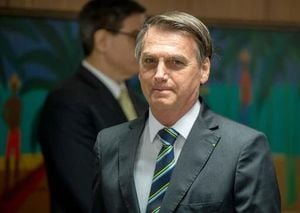In the heart of Kathmandu, the air is thick with anticipation and debate. Nepal, a country with a history of dramatic political shifts, finds itself at yet another crossroads—this time, propelled by the energy and demands of its youngest generation. The Gen Z uprising, which swept across the nation in early September 2025, has sent shockwaves through the country’s political and economic establishment, forcing parties, leaders, and citizens alike to reckon with new demands for accountability, transparency, and generational change.
According to The Kathmandu Post, the Gen Z movement has become a defining moment in Nepal’s modern history. It has challenged the very foundations of how politics is practiced and understood in the country. Established political parties, particularly the various communist groups that have long dominated Nepal’s political landscape, are now grappling with the need to rethink their ideologies and organizational structures. The urgency of this moment is palpable, as parties scramble to respond to the clear message delivered by the youth: business as usual will no longer suffice.
On November 5, 2025, in a move described as “spectacular” by The Kathmandu Post, nine communist parties announced their unity under a single banner. This unprecedented coalition was a direct response to the Gen Z uprising, signaling an attempt to consolidate power and present a unified front. Yet, the unity is far from complete. Major players like the Communist Party of Nepal (Unified Marxist–Leninist), or CPN-UML, and at least three other communist factions remain outside this coalition, highlighting the ongoing fragmentation and internal struggles that persist within Nepal’s leftist movement.
The Gen Z uprising has not only forced parties to reconsider their strategies but has also sparked a broader reflection on the nature of ideology itself. As recounted in The Kathmandu Post, the country’s political history is rich with debates over ideology, from the early days of grassroots communism to the rise of charismatic leaders like Manmohan Adhikari. Adhikari, who became Nepal’s first communist prime minister in November 1994, embodied a faith in ideology that resonated deeply with his followers. His ascent to power, just a year after a pivotal meeting with American academic Frederic Jameson in Kathmandu, marked a turning point in the country’s political trajectory.
Yet, as the current moment makes clear, the nature of political engagement is changing. The Gen Z movement represents a new energy—a call to deconstruct old values and generational hierarchies within political parties. The Nepali Congress, often described as the country’s largest political party, is now embroiled in internal debates about whether the youth inspired by this uprising should take the reins and contest upcoming elections. This tension between tradition and renewal is echoed across the political spectrum.
The voices of the past continue to inform the present. In a timely reminder of the enduring role of youth in politics, Kantipur recently republished an article by BP Koirala, Nepal’s first elected prime minister, originally written in 1981. Koirala’s optimism about the potential of young people to organize politics and drive positive change resonates powerfully in today’s context. “Youths in my view,” the article’s title, captures the spirit of the current awakening—a spirit determined to break stereotypes and act with new purpose.
The impact of the Gen Z movement extends far beyond the realm of party politics. At the National Economic Debate 2.0, held on November 9, 2025, Prime Minister Sushila Karki addressed the nation’s business leaders and made a striking admission. As reported by Republica, Karki declared, “The message is clear — they will not tolerate the misuse of national resources in the name of democracy. Genuine entrepreneurs must not suffer because of policy-level manipulation.” Her words underscored the movement’s uncompromising stance on corruption, political levies, and commission-based practices—issues that have long plagued Nepal’s governance.
Karki went further, describing the Gen Z movement of September 8–9 as a “turning point” that had conveyed a new mandate to the country’s leadership. “The movement reflected aspirations for economic and social progress and made it clear that Nepal cannot remain stuck in dependency and stagnation,” she said. The prime minister’s remarks signaled a willingness to listen to the demands of the youth, while also acknowledging the deep-seated structural challenges that continue to hinder the country’s progress.
Despite Nepal’s strong economic bases in remittances, natural resources, and tourism, Karki admitted that the nation has failed to achieve the expected outcomes. She pointed to structural weaknesses and capital flight as persistent obstacles, while also acknowledging public frustration over the growing number of young people seeking jobs abroad, sluggish industrial investment, and difficulties in the banking sector. “The path to building a prosperous, respected, and civilized nation is possible only through peace and cooperation,” Karki asserted, emphasizing the crucial role of the private sector in driving growth.
To address these challenges, the government has pledged to accelerate capital expenditure, boost market liquidity, create employment, and promote domestic production. Karki reaffirmed her administration’s commitment to holding the upcoming elections on schedule, urging cooperation from the private sector to ensure free and fair polls. “Various studies have shown that Nepal can achieve high economic growth while controlling inflation. This indicates that we are on the right track,” she said, offering a note of cautious optimism.
Yet, the Gen Z movement has not been without controversy. The private sector, represented by the Federation of Nepalese Chambers of Commerce and Industry (FNCCI), voiced concerns over vandalism and arson that occurred during the protests. FNCCI President Chandra Prasad Dhakal called on the government to take “stern action” against those responsible, highlighting the delicate balance between protest and public order that Nepal’s leaders must now navigate.
At its core, the Gen Z uprising has drawn a clear line between what is acceptable and unacceptable in Nepal’s governance. It has forced political parties to reckon with their histories, ideologies, and leadership structures, while also compelling the government to confront longstanding economic and social challenges. As the country moves forward, the voices of its youth—echoing both the optimism of BP Koirala and the determination of today’s activists—are shaping a new vision for Nepal’s future.
With elections on the horizon and the nation in the midst of transformation, the coming months will test whether Nepal’s leaders can rise to the occasion and deliver on the aspirations of a generation unwilling to settle for anything less than real change.




